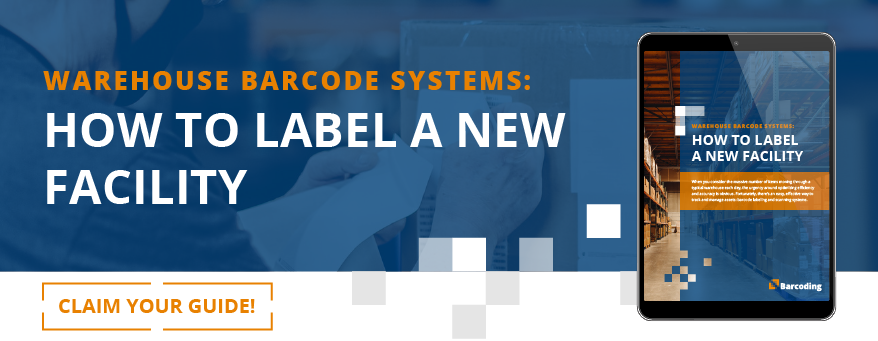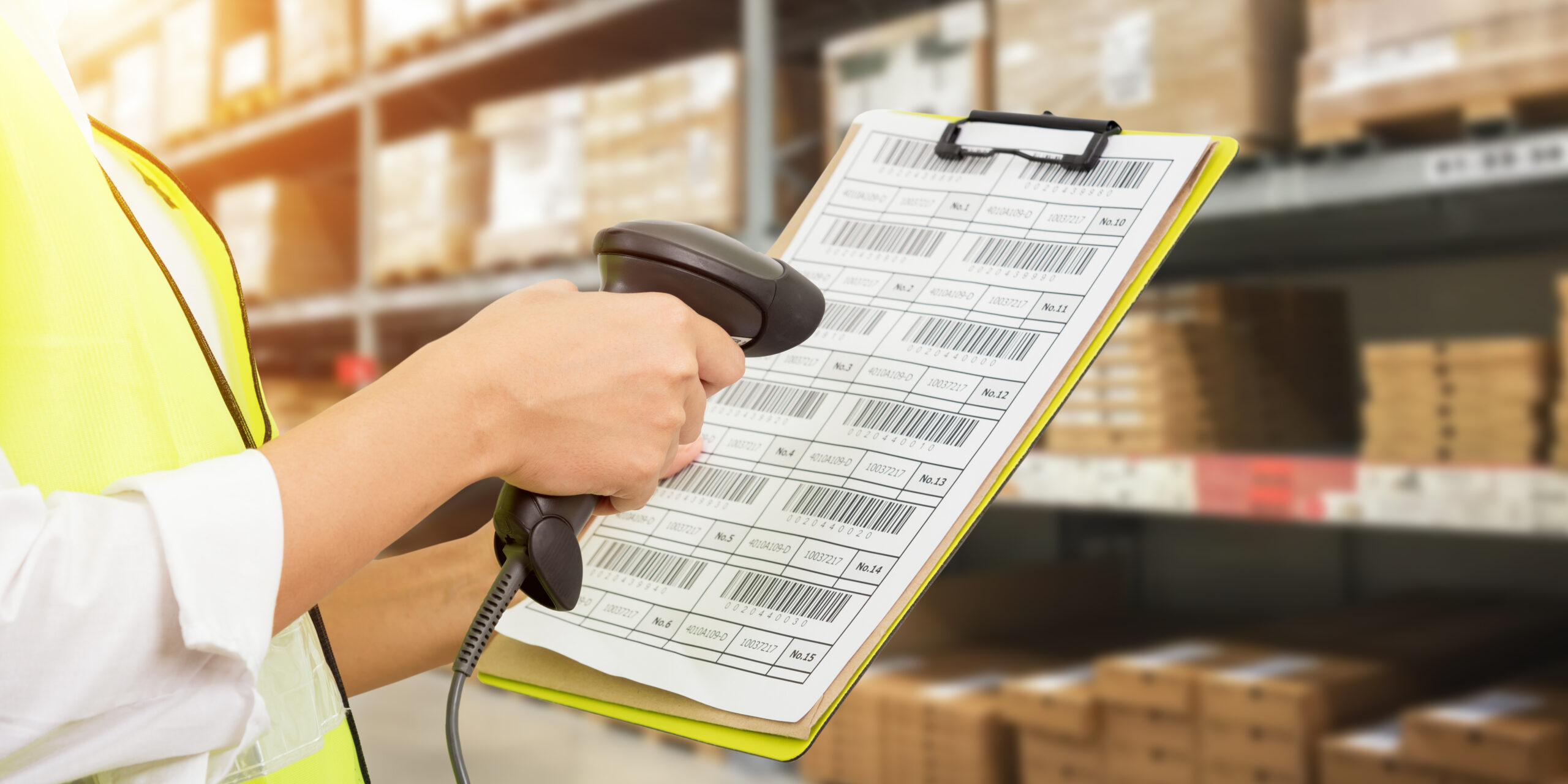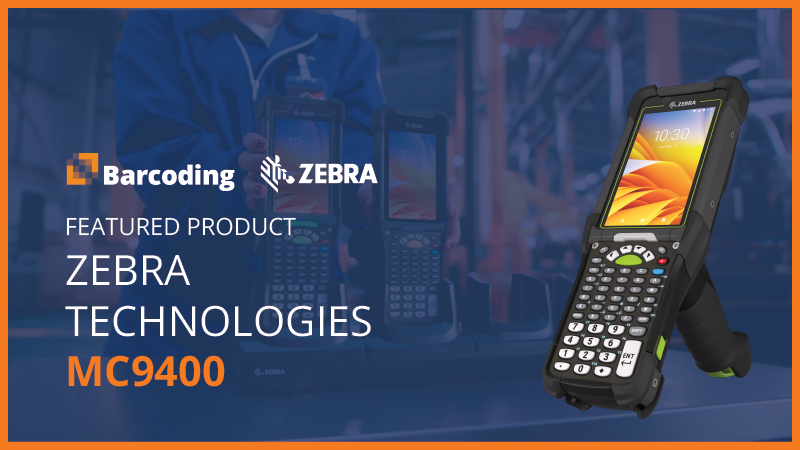Barcodes have been in use since 1974, inspired in inventor Joe Woodland’s mind by the dots and dashes of Morse code he had learned as a Scout.
A barcode’s composition is simple. It’s made up of a visual pattern of parallel black and white lines (and more recently, other geometrical arrangements). The bars are arranged to represent digits, and often also letters and symbols. Different barcode types can encode information for a wide range of applications.
It’s no exaggeration to say the barcode’s simple elegance revolutionized retail inventory management. Since its introduction, barcoding has been indispensable for reducing human error and ensuring visibility, traceability, and precision control over information in manufacturing, IT operations, supply chains, and industries worldwide including healthcare, travel, and many others.
The information represented in a barcode can be simple or complex, depending on the user’s needs and system requirements. Generally, barcode systems are standardized, and organizations like GS1 help ensure the use of standards among industry partners. But these systems only work when a barcode is read by a scanner.
So, how does barcode technology work? Let’s take a look at how different types of barcode scanning devices work together with printed barcode labels to help get the job done with greater speed, efficiency, and accuracy.
How Does a Barcode Scanner Work?
No matter what method is used to read a barcode, all barcode readers use a light source and sensors to detect and measure the intensity of light reflected back by the white spaces within the unique pattern of parallel bars. The reflected light is detected through a photodiode, producing an electronic signal that corresponds to the barcode pattern.
Next, that electronic signal passes through circuits, which translate it back into the original digits (and possibly also letters and symbols, depending on the barcode type) that the barcode was generated to represent. The digits are converted by the system into meaningful text that works within the user’s database, delivering essential information at incredible speed.
That’s it. That’s how a barcode is read by a scanning device. But different types of barcode readers are suited for different applications, and choosing the right device for the job helps ensure that a barcoding system delivers on its promise of speed and accuracy.
And since you’re choosing from among 20,000 or so barcode reading and data capture products, you’ll want to take a close look at your options and understand their specific benefits, starting with a close look at the major types of barcode readers available on the market.
What are the Most Common Barcode Reader Technologies?
Each scanner type has its own advantages and disadvantages. The best type of barcode reader is one that’s best suited for the barcoding system followed, the working environment, the required reading range, the total cost of ownership, and other key characteristics.
That’s why it’s wise to consult with an expert like Barcoding when evaluating the choices. Our Process, People, Technology (PPT) philosophy focuses on workflows and the people performing the tasks before making technology, system, or device recommendations.
1. Pen or Wand Barcode Readers
As the name suggests, pen type readers are shaped like a wand. The tip houses both a light source and a photodiode. To read a barcode, the user drags the tip of the barcode wand across the bars in an even motion.
Dark bars absorb light and white spaces reflect it back. The photodiode measures the light intensity and generates a voltage waveform that is an exact duplicate of the black and white, bar and space pattern in the barcode. The reader decodes the waveform into digital data.
Wand readers are typically lowest in price, making them an accessible way to incorporate bar coding into inventory management. At the same time, they can be more temperamental to use than other scanner types, because the pen tip needs to directly contact and pass smoothly over the barcode. This can create more opportunities for user error. Because of their small size and pocketability, they can also be misplaced.
2. Laser Scanners
Laser readers are incredibly popular, especially in retail and point of sale environments. They’re easy to use whether hand-held or mounted, and they can read barcodes from longer ranges—from 6 inches to 30 feet, depending on the device.
Laser readers use a laser as their light source. A reciprocating or oscillating mirror or rotating prism scans the laser beam back and forth across a barcode. A photodiode inside the scanner measures the intensity of light reflected back from the white spaces within the barcode and generates a specific frequency that translates into the digital information.
3. CCD (Charge Coupled Device) Readers
CCD readers use an array of hundreds of light sensors in single row formation. They act together like a single photodiode to measure the intensity of ambient light that reflects off the barcode pattern.
Each tiny sensor generates a voltage pattern, and the reader assembles the individual patterns into a whole that corresponds to the barcode. Unlike laser and pen barcode readers, CCD scanners do not rely on an internal light source.
CCD devices are highly accurate, and they are popular for use in retail applications. But one disadvantage they present is that they need to be close to the barcode being scanned. They’re also unable to scan barcodes larger or longer than their own sensor array.
4. Camera Based Readers
A camera based scanner uses a small video camera to capture the barcode image. The device applies advanced digital image processing technology to decode the barcode pattern.
The technology is similar to CCD readers, but CCD scanners use sensors arranged in a single line, and camera-based readers use a two-dimensional sensor arrangement. This enables the scanner to actually generate an image of the barcode.
Camera-based readers enable easy deployment and faster scanning of 1D barcodes and 2D codes. Omni-directional camera based scanners can easily read barcodes even when not ideally presented or aligned. Unlike laser readers, they have no moving parts, which can mean better durability. They’re also able to read more data-robust codes than other readers.
Barcode Scanning Device Types
Along with the selection of the scanning technology, the design of the device itself is an important consideration. Scanners can be fixed, handheld, or wearable. They can be specially designed for use in a wide range of demanding environments, including:
- Extreme temperatures
- High humidity or moisture
- Rugged use and/or chemical exposure
- Healthcare/medical settings
- High-volume scanning
- And more
When implementing a barcoding system to improve productivity and efficiency, it really is essential to choose the right type of device for the job and the worker.
Common Issues that Cause Barcode Label Scanning Problems
Besides the individual pros and cons of barcode scanner technologies and device designs, barcode labels can sometimes present challenges, so it’s equally important to print high quality barcodes that can be optimally read by the devices in use.
Need to create a barcode? Check out our free barcode generator.
Often, a hard-to-read barcode comes down to preventable label design or printing errors such as:
- Ink bleed
- Inadequate light margins
- Missing horizontal line
- Insufficient color contrast
- Barcodes printed too large or too small
- Issues with transparent, dull, or metallic substrates
- Issues with vertical edges, round shapes, or distortion
- Creased or peeling barcode labels
- Bands, labels, and stickers obscuring barcodes
- And more
If your scanner isn’t reading your barcode, it could be the device, but it’s important to remember the barcode itself could be the problem. Labels, printing technologies, software, and other factors can also contribute to problems. For example, there are proven best practices for labeling a warehouse that make it easier for workers to do their jobs. It’s essential to make sure all aspects of your system are selected and designed to work together.
Every factor that goes into choosing a barcoding system and reader technology is important in its own right, from cost and maintenance to the types, levels and quantities of data you need to handle. But the most important factor in your decision is the expert you choose to partner with. For more than 20 years, we’ve helped customers achieve unparalleled efficiency, accuracy, and connectivity with our end-to-end solutions for customers around the world.
Learn how you can get even more out of your barcoding system implementation by following expert guidance in selecting label types, printing technologies, scanning devices, and even label placement. Download our free guide, How to Label a New Facility. Click below to get your copy now.







